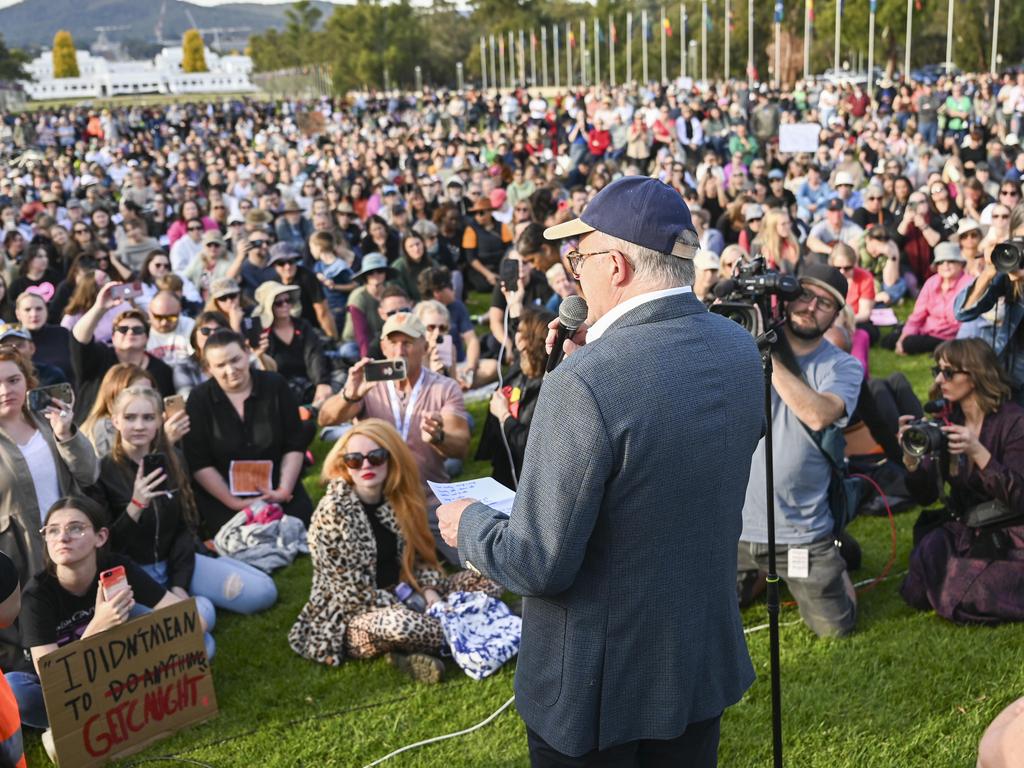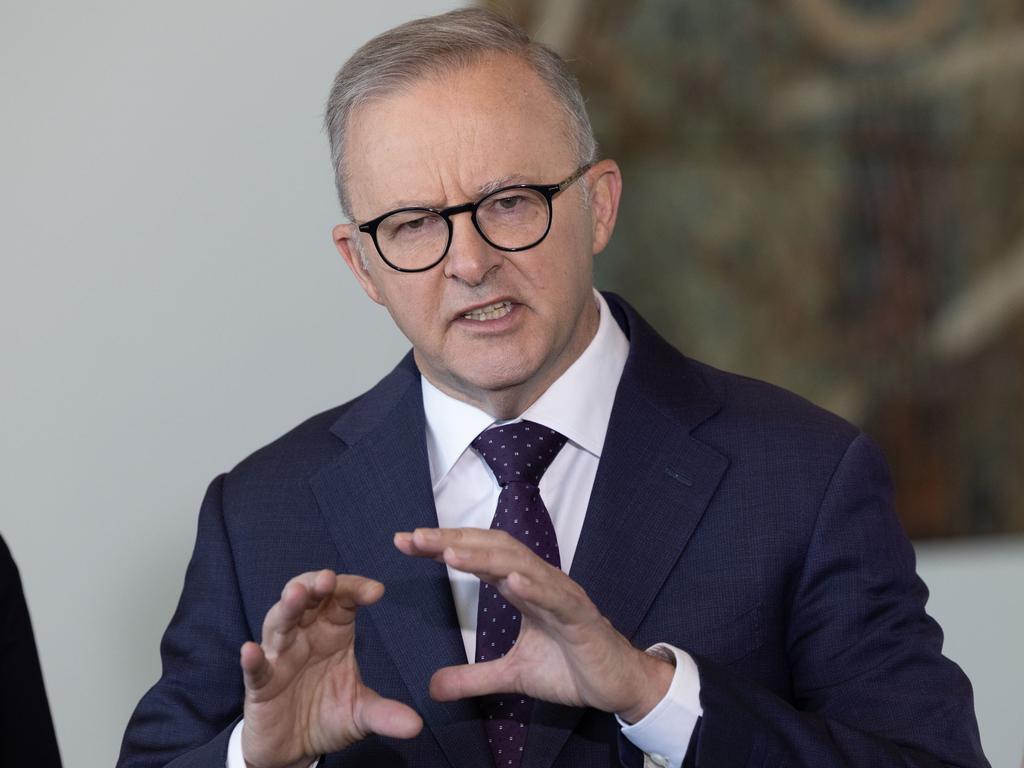If these deaths happened in a big city, there would be outrage. Instead, they were ‘ignored’
Seven horrific deaths in the space of four months in one part of the country went largely unnoticed, sparking a blistering response from a top cop.

A frustrated top cop stood in front of a press pack and delivered an impassioned plea to Australia to not ignore seven brutal deaths that have occurred in his patch in just four months.
That searing appearance barely made a ripple in much of Australia, which experts say is shameful but not unexpected.
Earlier this year, surging rates of domestic and family violence deaths – an average of one every week – sparked mass protests across the country and a declaration of a national crisis from the prime minister.
In May, the Domestic, Family and Sexual Violence Commission convened urgent talks following a number of high-profile alleged murders in the first half of the year.
Since then, a rapidly worsening situation has unfolded, largely in the shadows, in one part of the country.

“Seven matters, being investigated as domestic violence homicides, [have occurred] since June 1,” Northern Territory Police Assistance Commissioner Travis Wurst said at a media conference last month.
Mr Wurst was appearing to brief reporters on the latest alleged murder, another escalation in a “mounting tragedy” that should “no longer be ignored”.
“The woman who has passed away had a family, she had children. They do not have a mother now as a consequence of the actions of this person.
“The Northern Territory can’t accept one death, let alone seven. It is something the community needs to wake up to and deal with.
“Each of these involved the death of a family member at the hands of another. Each of these involved alcohol as a contributing factor in some way.
“Police have a role to play as it relates to community safety, but we can’t be everywhere at all times. We need to do better as a community to prevent these things from happening.”
In addition to those deaths, two women remained in intensive care after alleged domestic and family violence-related incidents.
And NT Police were receiving up to 80 calls about domestic and family violence matters “every single day”, he added.
“This has to stop,” Mr Wurst pleaded.

DFSV Commissioner Micaela Cronin said more must be done to address the Territory’s epidemic, which would get much more attention if it was playing out elsewhere.
“The total population of the Northern Territory is about the same as Hobart, and less than that of Geelong,” Ms Cronin said.
“If we had experienced the loss of seven people to family violence in one regional town in four months, the whole country would be outraged.
“I am horrified at the ongoing domestic and family violence-related deaths and life-threatening attacks we have seen in the Northern Territory in recent months.
“My heart goes out to the families and communities who are grieving.
“We are committed to listening to, and working alongside, Aboriginal and Torres Strait Islander communities to better understand the drivers of violence and the solutions needed to end gender-based violence.”
An epidemic ignored
Research by Professor Kyllie Cripps, director of the Monash Indigenous Studies Centre, shows First Nations women are 32 times more likely to be hospitalised for injuries related to violence.
They are eight times more likely to be killed.
“Intimate partner violence in Australian Indigenous communities is unfortunately a common experience,” Professor Cripps wrote.
“Indigenous women are more likely to experience this type of violence than any other population group.”
In some parts of the country, those horrific statistics are even worse, she pointed out, especially in the Top End.
“In the NT, the Indigenous victimisation rate is approximately 18 times higher than in any other jurisdiction, and homicide rates are also disproportionately higher, given the isolation that comes with being in a state largely deï¬ned by remoteness.”

Analysis of data from the Australian Institute of Criminology by Professor Rick Sarre from the University of South Australia paint a similarly disturbing picture.
In the 2022-23 financial, police across the country reported 232 homicides resulting in 247 victims, representing a murder rate of 0.87 deaths per 100,000 people.
But when taking a closer look at the data, Professor Sarre pointed out a shocking disparity, with Indigenous people comprising 20 per cent of victims.
“The homicide rate was 3.07 per 100,000 for Indigenous women, compared with 0.45 per 100,000 for non-Indigenous women,” he wrote in analysis for The Conversation.

On Monday, the ABC show Media Watch aired a segment pointing out how infrequently these deaths make headlines.
It pointed out that Indigenous cultural considerations make naming and featuring the photographs of those who have died is difficult, and First Nations people might be distrusting of the media.
But, as the show pointed out: “When a woman is killed by her partner … her death has a much better chance of being branded a ‘national disgrace’ if she is young, good looking, and white.”
Unfair funding allocation
Under mounting pressure to address the country’s domestic and family violence crisis, the Federal Government has committed a $4.7 billion plan to dramatically boost frontline services.
But the strategy threatens to leave vulnerable communities out in the cold.
The government’s funding model proportions money based on population, not need, meaning the NT will miss out, advocates say.

In September, recently elected Chief Minister Lia Finocchiaro fronted National Cabinet and lobbied Prime Minister Anthony Albanese for a bigger cut of funding.
“I impressed upon the Prime Minister and my fellow state and territory [leaders] that this is a critical issue in the NT, and a business-as-usual per capita formula won’t cut it,” Ms Finocchiaro said.
“I will be working to negotiate the NT’s fair share of this funding given our significant over representation in domestic violence statistics. My government is investing an additional $180 million over five years, but we can’t solve this issue alone.”
The National Aboriginal and Torres Strait Islander Legal Service concurred, expressing concern that insufficient funding risks a “perpetual crisis”.
“Nationally, we already can only support a fraction of the people who need our help, including victim-survivors of domestic, family and sexual violence,” the body’s chair Karly Warner said.
The government’s population-based funding model “confirms the government thinks this is okay”.






